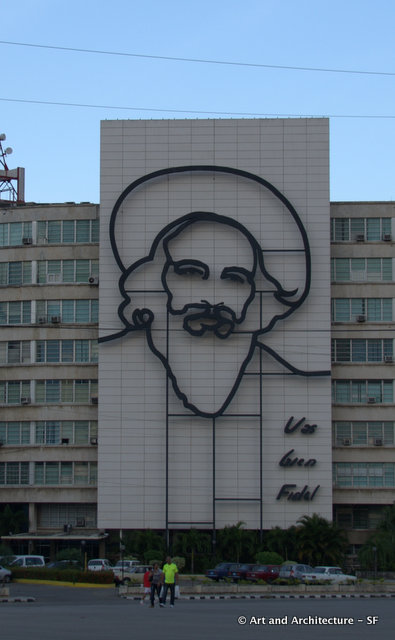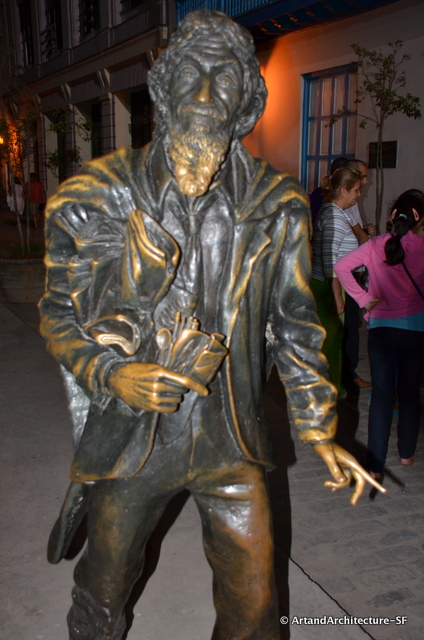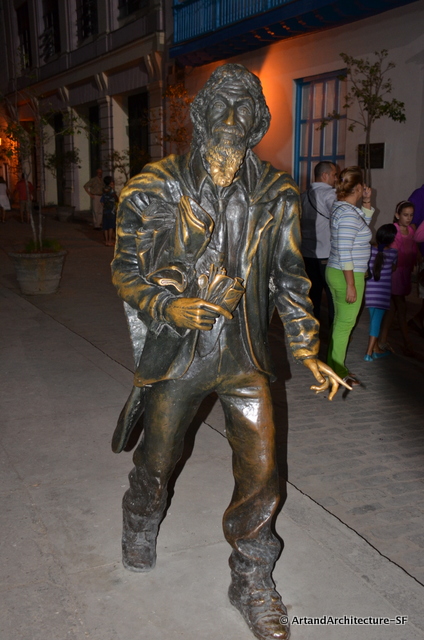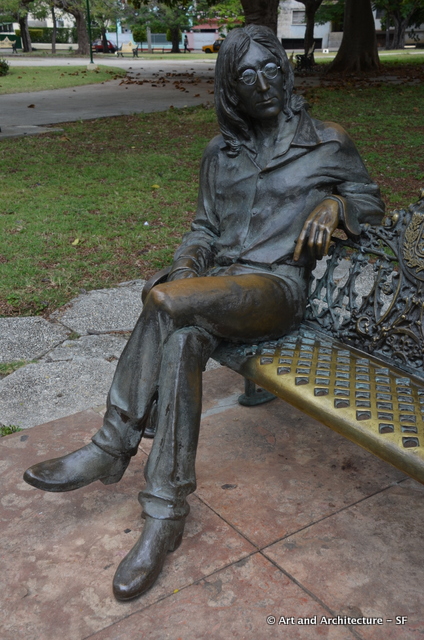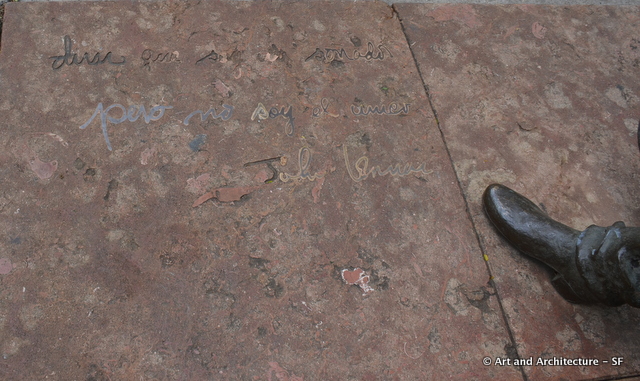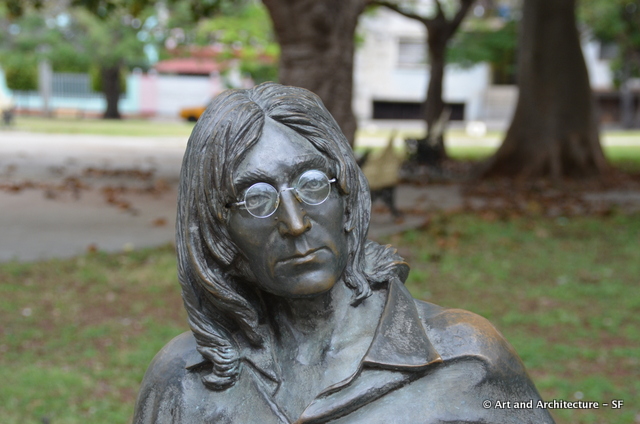 The morning began with a tour of a Botanical Garden that specialized in Orchids.
The morning began with a tour of a Botanical Garden that specialized in Orchids.
 Our guide, Aliett Cecilia Diaz, was a botanist and a perfect English speaker.
Our guide, Aliett Cecilia Diaz, was a botanist and a perfect English speaker.
 In 1952 Attorney Thomas Felipe Comacho began building a garden for his famous orchid collection. The garden, an addition to the home, built in 1943, took nine (9) years and $1.5 million to build. It was a tribute to his wife and daughter Pilar.
In 1952 Attorney Thomas Felipe Comacho began building a garden for his famous orchid collection. The garden, an addition to the home, built in 1943, took nine (9) years and $1.5 million to build. It was a tribute to his wife and daughter Pilar.
The 35,000 square meter garden is now owned by the Pinar del Rio University and is a center for study and orchid conferences. They have 700 varieties of orchids and 6000 ornamentals, and apparently a fabulous library.

*

The next stop was obligatory but excellent – Las Terrazas.
Las Terrazas is the perfect study in Socialist living, and in fact was the first of its kind in Cuba. It functions very similar to a Kibbutz but here the families live in their own units and do all of their own cooking.
The project was the task of architect Osmany Cienfuegos. He was charged with reclaiming the land and creating what would later become a park within a biosphere. The biosphere is known as Sierra El Rosario and the park is Las Terrazas.

The single family homes of Las Terrazas

The backs of the apartment buildings of Las Terrazas, the little pop outs are closets.
The first workers enticed to move to the area were given homes, and there are 45 of those. As more people realized the work was good they came in droves and those people all live in large apartment buildings. As long as you work for the park you can remain in your home, and houses are essentially handed down.
At present 45% of the employment is in the tourism trade the rest in the maintenance of the park. As tourism has expanded there is not enough housing, and many, like our guide are bussed into the area. They have, to date, built one tourist hotel.
The project began in 1968 by bulldozing 1500 terraces and planting over 6 million trees. Villa Terrazas, the communal neighborhood was built in 1971 and houses the workers, a grocery store that takes ration cards a grocery store that takes pesos, a doctor, a dentist a post office a cinema, a disco and a craft market.
In 1985 the area was turned into a biosphere and in 1990 tourism was introduced.
 After a fun, fun visit to a primary school, where the second grade class entertained us with songs, we headed to Café Maria. Originally the café was in Maria’s home and served the workers, but at tourism became the main focal point they built Maria a café for her and her children to work, big enough to handle bus loads. Your choices were espresso, espresso with Guyabita liqueur, and the third choice was espresso with chocolate liqueur and ice cream. Next time I am ordering all three, they all were delicious and it wasn’t fair to try just one.
After a fun, fun visit to a primary school, where the second grade class entertained us with songs, we headed to Café Maria. Originally the café was in Maria’s home and served the workers, but at tourism became the main focal point they built Maria a café for her and her children to work, big enough to handle bus loads. Your choices were espresso, espresso with Guyabita liqueur, and the third choice was espresso with chocolate liqueur and ice cream. Next time I am ordering all three, they all were delicious and it wasn’t fair to try just one.

A bio shower, just outside Cafe Maria

Our guide at Las Terrazas, Anais Gloria
 A stop at the art gallery of Lester Campa, while the artist was not home we had the opportunity to step into his gallery right on one of the lagoons and purchase what our wallets could afford. I later had the pleasure of meeting the artist in Havana, he is much younger than I anticipated and thrilled to discuss his art.
A stop at the art gallery of Lester Campa, while the artist was not home we had the opportunity to step into his gallery right on one of the lagoons and purchase what our wallets could afford. I later had the pleasure of meeting the artist in Havana, he is much younger than I anticipated and thrilled to discuss his art.

The painting I purchased from the Artist
Lunch was at the home of a Señor Saint Salebar. Salebar was a Frenchman that escaped from Haiti during the slave revolution and went about buying land for a coffee plantation. This spot, 240 meters above sea level still has some remnants of the coffee plantation “Buena Vista”.

The Saint Salabar Coffee Plantation


Lunch was truly delicious; it began with taro chips and then consisted of salad, rice and beans, shredded beef and a new one for this trip, rabbit.
Then a one-hour drive to Havana and a stop at Revolution Square. José Martí Plaza de Revolucion, the 31st largest public square in the world, while conceived in the 1940s, was not complete until 1959. It is dominated by Cuba’s largest building at 130 meters tall. There are a few buildings that surround this huge empty paved spot including the National Library, and the former offices of Fidel Castro.

There is a 16 ton metal single line sculpture reproducing the famous photo of Che Guevara taken by Cuban photographer Alberto Korda on the Ministry of the Interior building, where Che once worked. Below this sculpture are the words Hasta la Victoria Siempre (Onward forever to victory) in Che’s handwriting. This sculpture, done in 1993 was by Cuban artist Enrique Avila Gonzales.

On the Ministry of Communication building is a similar sculpture of Camilo Cienfuegos, with the words “You are doing well Fidel.” This was done in 2009 by the same artist. Cienfuegos, while not as well known to Americans as Che, is a significant person in Cuban history. He was one of the main chiefs in the 1959 revolution, he died in a plane crash that same year.

Our hotel for the next few nights was the Melia Cohiba, a 17 story four-star hotel with a swimming pool, television, expensive restaurants, first quality art on the walls and even internet, for a price.
Melia is a Spanish company and the staff is a combination of Spaniards and Cubans.

Our Itinerary:
Visit to the Soroa Orchid Garden
Depart for Las Terrazas
Walk through the local community to see the local schools and businesses
Lunch in a local restaurant
Visit Maria’s Coffee shop
Depart for Havana
Visit Hemingway’s home (See Hemingway and Cuba)
Afternoon orientation drive through Havana and a stop at Revolution Square
Diner at Mercaderes
overnight Melia Cohiba


Nadia, Gustavo, the owner of Mercaderes and our waiter President Obama

Rose petals covered the stairway up to the restaurant
The food was divine and it was the first time we were served drinkable wine since being in Cuba!!

*

